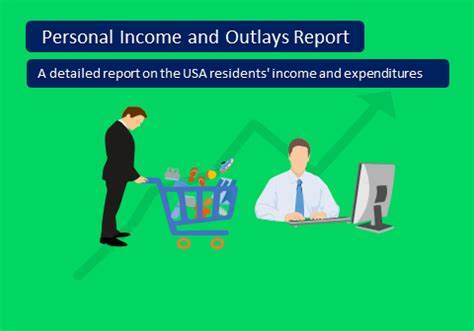
Understanding the Personal Income and Outlays Report
The Personal Income and Outlays Report is a key economic indicator published monthly by the Bureau of Economic Analysis (BEA). It provides a comprehensive overview of the income received by individuals and the expenditures made on goods and services. This report is essential for understanding consumer behavior, economic health, and the overall spending power of households.
Key Components of the Report
- Personal Income: This section details the total income received by individuals from various sources, including wages, salaries, rental income, dividends, and government transfers. Personal income is a critical measure of the financial well-being of households and is closely watched by economists and policymakers.
- Disposable Personal Income (DPI): DPI refers to the amount of income available to households after accounting for taxes. It is a vital indicator of consumer spending potential, as it reflects the income that individuals can use for consumption or savings.
- Personal Consumption Expenditures (PCE): This component measures the total value of goods and services consumed by households. PCE is a significant driver of economic growth, as consumer spending accounts for a large portion of the GDP.
- PCE Price Index: This index tracks changes in the prices of goods and services consumed by households, providing insights into inflation trends. The PCE Price Index is the Federal Reserve’s preferred inflation gauge.
Impact on the Investment Community
The Personal Income and Outlays Report has a substantial impact on the investment community for several reasons:
1. Consumer Spending Insights
Consumer spending is a primary engine of economic growth. An increase in personal income and expenditures typically indicates robust economic conditions, leading investors to consider increasing their exposure to consumer goods and services sectors.
2. Economic Health Indicator
The report serves as a barometer for overall economic health. Rising disposable personal income and consumption can signal economic expansion, while declines may indicate economic slowdowns. Investors often adjust their strategies based on these insights.
3. Monetary Policy Implications
The Federal Reserve closely monitors the Personal Income and Outlays Report to inform its monetary policy decisions. Strong consumer spending can lead to concerns about inflation, prompting the Fed to consider tightening monetary policy. Conversely, weak spending may encourage the Fed to maintain or lower interest rates to stimulate the economy.
4. Stock Market Reactions
The stock market often reacts to changes in personal income and consumption data. Positive reports may lead to gains in consumer discretionary stocks, while disappointing figures can result in declines. Investors utilize this information to make informed trading decisions.
5. Inflation and Interest Rates
The PCE Price Index within the report is crucial for assessing inflationary pressures. Rising prices can impact interest rates, with higher inflation potentially leading to increases in rates. Investors in fixed-income securities closely monitor these trends to manage interest rate risk.
Insights from the Report
- Consumer Behavior Trends: The report provides valuable insights into consumer behavior and spending patterns. Changes in consumption can indicate shifts in preferences, which can inform product development and marketing strategies for businesses.
- Savings Rate Analysis: The report also provides data on the personal savings rate, which reflects the proportion of disposable income that households save. Understanding trends in savings can help investors assess future spending potential and economic resilience.
- Regional Insights: Analyzing personal income and spending data by region can uncover localized economic trends. This information can be beneficial for investors looking to target specific markets or sectors.
- Impact on Employment: Personal income and outlays can influence employment trends. Increased consumer spending may drive demand for labor, leading to job creation. Investors often look at employment data in conjunction with income and spending figures to gauge economic health.
Economic Cycles and Personal Income and Outlays
The Personal Income and Outlays Report is essential for understanding economic cycles:
- Expansion: During economic expansions, personal income and consumption typically rise, reflecting increased consumer confidence and spending. Investors often seek opportunities in growth-oriented sectors during these times.
- Peak: At the peak of the economic cycle, income and spending may stabilize. Investors may begin to diversify their portfolios, anticipating potential downturns.
- Contraction: In times of economic contraction, personal income may decline, leading to reduced consumer spending. Investors may pivot towards defensive sectors less reliant on consumer spending.
- Trough: At the trough of the cycle, income and spending may stabilize, indicating potential recovery. Investors often look for undervalued assets, anticipating future growth as economic conditions improve.
Conclusion
The Personal Income and Outlays Report is a vital economic indicator that provides essential insights into consumer behavior, economic health, and potential investment opportunities. By analyzing personal income and consumption data, investors can make informed decisions about asset allocation, sector exposure, and risk management. As a key gauge of economic performance, the report shapes market sentiment and influences financial markets, making it essential for investors to closely monitor its implications.

